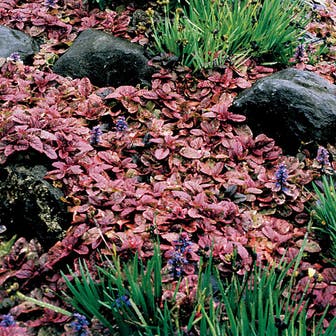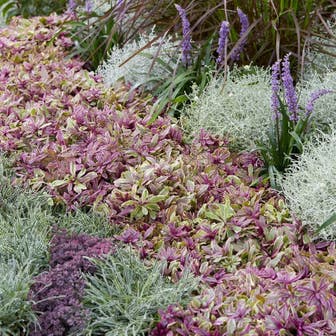Discover the lush beauty of Ajuga Plants, the perfect ground cover for any garden enthusiast looking to add a splash of color and texture to their landscape. Known for their robust growth and striking foliage, Ajuga, or Bugleweed, thrives in a variety of climates, making it an ideal choice for gardeners across many zones.
About Our Ajuga Plants
Transform Your Garden with Ajuga: The Perfect Groundcover Solution
Whether you're looking to cover bare spots or enhance your garden paths with enduring color, Ajuga from Wayside Gardens is your go-to solution. Explore our selection today and experience the impact of these ground-covering marvels in your outdoor sanctuary.
Why Choose Wayside gardens?
At Wayside Gardens, we are committed to providing high-quality plants and expert gardening advice. Our Ajuga plants are nurtured with care from seed to shipment, ensuring that you receive robust, healthy specimens that will thrive in your garden. Trust us to help you beautify your outdoor spaces with exceptional plants that promise outstanding performance and spectacular beauty.
Kickstart Your Early Spring Garden with Ajuga Plants from Wayside Gardens
Elevate your early spring garden with the vibrant foliage and blossoms of Ajuga plants. These robust ground covers are an essential addition for gardeners looking to infuse life and color into their garden as the season changes. Known also as Bugleweed, Ajuga is renowned for its rapid growth and beautiful, dense foliage that comes alive with blooms just as spring begins.
- Early Bloomer
- Lush, Dense Foliage
- Flexible Growth Conditions
- Low Maintenance
Kickstart Your Spring Garden with Ajuga: The Smart Groundcover Choice
Start your gardening season on the right foot with Ajuga from Wayside Gardens. Perfect for creating a ground cover that not only beautifies but also protects your garden, these plants are a smart choice for savvy gardeners preparing for the early spring.
Choose Wayside Gardens for Quality
At Wayside Gardens, we pride ourselves on delivering plants of the highest quality. Our Ajuga plants are carefully cultivated to ensure they arrive at your home ready to thrive. Count on us for robust plants and expert advice that will help your garden flourish from the very start of spring.



